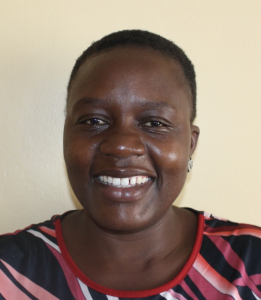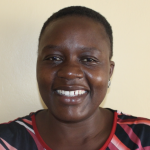A day at Shina Primary School begins at 6:30am when pupils are seen running to school. In one hand they carry their school bag, while in the other hand is a yellow jerrycan full of water. As they walk through the school gate, staff checks to see whether or not they have water. If they don't, they're sent back out to fill that jerrycan.
Water
There's no water on school grounds, and that's why students must carry their portion from home. Teachers have asked students to get clean water from protected springs, but the closest one is almost two kilometers away. Students admit that they often stop by open dirty water sources that are more convenient.
The three to five liters of water carried to school today doesn't often meet the drinking, cooking, and cleaning demands. Students are often asked to take up their water containers to find water throughout the day. The headteacher said that when students are absent, there's a good chance that they're at home dealing with waterborne disease.
Sanitation
There are 20 pit latrines, but 16 of the pits are almost full. These are dirty and smelly because the water students carry is first used for drinking and cooking. We witnessed students using these filthy facilities with bare feet.
There are no hand-washing stations.
Teacher Kamute Ayoyi told us, "I am the headteacher of Shina Primary School. Water and sanitation have been my greatest nightmares in this school. Since we have no water source on school grounds, we have to send pupils to fetch water from a stream 1.5 kilometers away. The majority never come back to school, while others go playing on the way until an adult follows up. Some pupils also opt for any water sources close by, and most of the time they are not safe. In a week at least five pupils are sent home for medical treatment, and we partly owe this to lack of safe drinking water in the school."
Here's what we're going to do about it:
Training
Training will be held for two days. The facilitator will use PHAST (participatory hygiene and sanitation transformation), ABCD (asset-based community development), CTC (child to child), lectures, group discussions, and handouts to teach health topics and ways to promote good practices within the school. The CTC method will prepare students to lead other students into healthy habits, as well as kickstart a CTC club for the school.
Hand-Washing Stations
This CTC club will oversee the new facilities, such as hand-washing stations, and make sure they are kept clean and in working condition. The two hand-washing stations will be delivered to the school, and the club will fill them with water on a daily basis and make sure there is always a cleaning agent such as soap or ash.
VIP Latrines
Two triple-door latrines will be constructed with local materials that the school will help gather. And with a new source of water on school grounds, students and staff should have enough to keep these new latrines clean.
Rainwater Catchment Tank
A 50,000-liter rainwater catchment tank will help alleviate the water crisis at this school. The school will also help gather the needed materials such as sand, rocks, and water from the spring for mixing cement. Once finished, this tank can begin catching rainfall that will be used by the school’s students and staff.
We and the school strongly believe that with this assistance, standards will significantly improve. These higher standards will translate to better academic performance!
This project is a part of our shared program with Western Water And Sanitation Forum (WEWASAFO). Our team is pleased to provide the reports for this project (formatted and edited for readability) thanks to the hard work of our friends in Kenya.

 Rainwater Catchment
Rainwater Catchment
 Rehabilitation Project
Rehabilitation Project




































